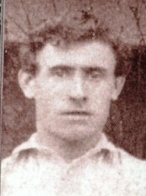Prior to Liverpool’s FA Cup tie with Oldham Athletic this Sunday a minutes silence will be held in memory of Wayne Harrison, who died on Christmas Day and was the subject of a record breaking transfer between the two clubs in 1985.
Stockport born Harrison came to Liverpool’s attention when he starred in Oldham’s 4-3 FA Youth Cup victory in December 1984. Having already attracted interest from Everton, Nottingham Forest and Manchester United, whose manager Ron Atkinson was interested in a play swap deal, Liverpool acted fast. Worried about a rival signing such a top young talent, Chairman John Smith lodged a £250,000 cash bid which Oldham manager Joe Royle readily accepted given they were struggling to survive on crowds of less than 5,000 in the old 2nd Division.
The fee was a world record for a teenager and stunned the football world, given Harrison had played just five games for the first team. But there was good reason why the Reds were willing to spend big. Harrison had electric pace and could also read the game extremely well, showing great awareness in staying onside and having excellent finishing skills. Royle felt that Harrison was the best player he had seen as a sixteen year old since Trevor Francis had broken into Birmingham’s side in 1970.
It was a dream come true for Harrison who had grown up as a Liverpool fan despite the proximity of Manchester United and Manchester City. But he would have to be patient in waiting for a chance as after completing the deal he was loaned back to Oldham to continue his development but before the end of the season he was recalled to Liverpool, scoring twice in four games for the reserve side that retained the Central League title.
However the next three years were blighted by injury, including a near fatal one sustained on a pre season reserve tour when he fell through a greenhouse and suffered a major loss of blood. The local ambulance service was on strike and he had to be stabilised by army medics before being taken to hospital. He also suffered from groin, cartilage, shoulder and knee injuries and managed just sixteen appearances between 1985 and 1987 and didn’t play at all in 1987-88.
By 1988-89 Harrison was fit enough to spend a short time on loan with Crewe Alexandra where he scored once in three games. He then enjoyed a successful end to the Central League season with Liverpool, scoring seven times in the final eight matches.
In 1989-90, Harrison scored eighteen goals for the reserves and finally looked to be on the verge of a first team breakthrough, only to collide with the Bradford keeper in the final minute of a 3-1 victory on 3rd May. He was carried off and was diagnosed with a cruciate ligament injury. Harrison underwent a series of operations but in the summer of 1991 new manager Graeme Souness gave him the news that he dreaded, that medics had determined his career was over.
Liverpool travelled to Boundary Park for Harrison’s testimonial in April 1992, Don Hutchison and Ronny Rosenthal scoring in a 2-2 draw. 4,400 fans turned out for the game but Harrison was unable to make even a token appearance due to his injury.
It took Harrison a few years to fully recover but showing no bitterness, he took a job as a driver for Robinson’s Brewery in Stockport and played occasional Sunday league football. In 2011 he was unfairly labelled one of he five worst teenage transfers ever by the Daily Mail. On Christmas Day 2013, he died in Stepping Hill hospital in Stockport at the age of just 46 after suffering from pancreatic problems.









